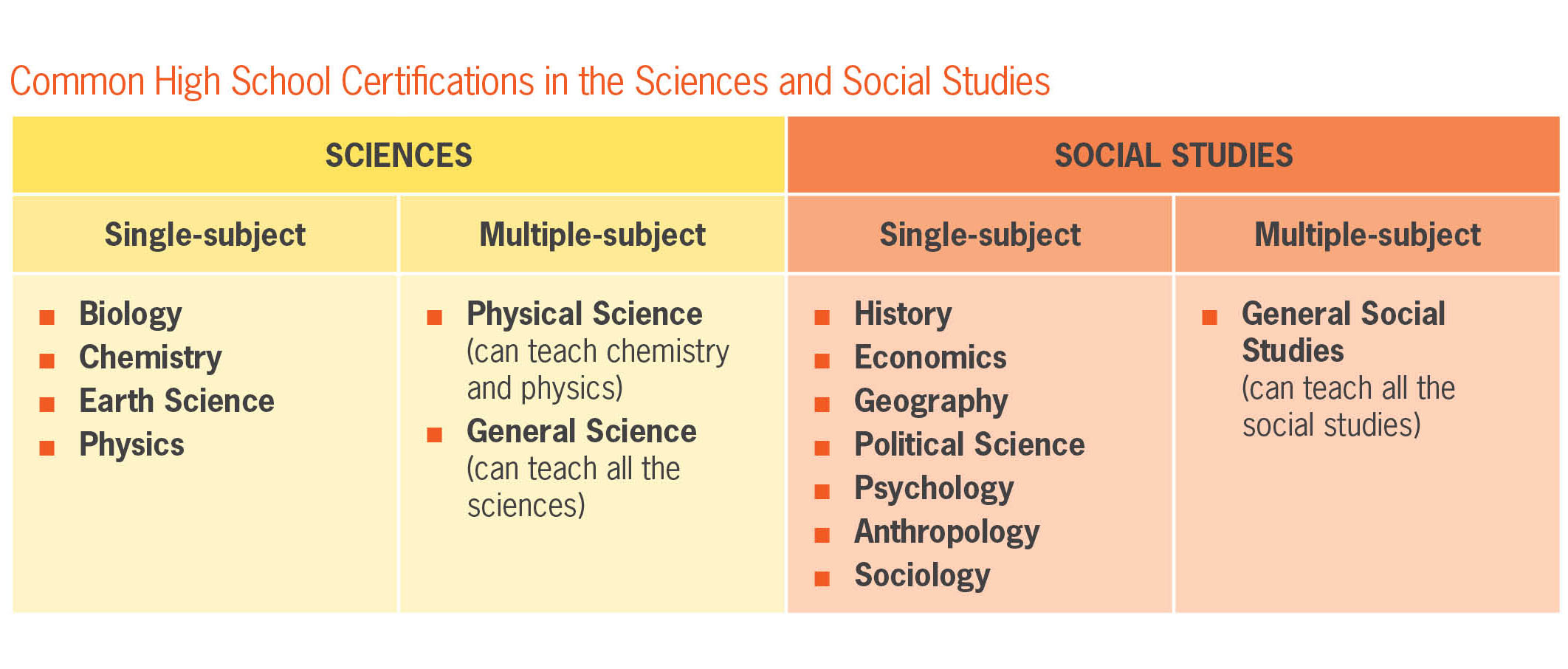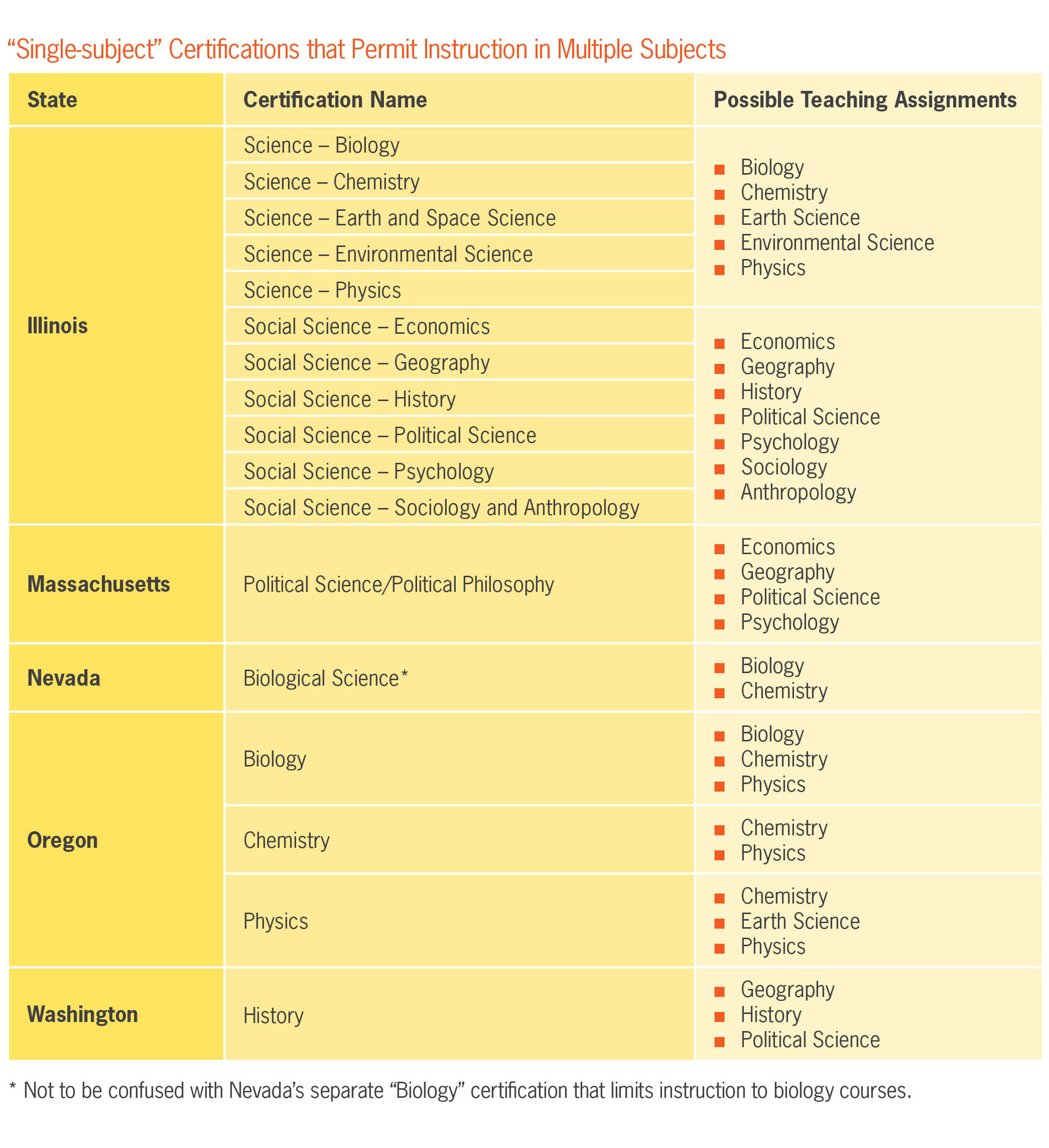This is the first of a four part series examining secondary certifications, state licensing tests, and how teacher prep programs structure content coursework.
There is a seemingly simple path to high school certification: complete a major in the subject you want to teach while taking a few courses like classroom management and methods of instruction along the way. It can often be just that straightforward, especially for English and mathematics teachers. But, variations among the states can make certification in the sciences and social studies difficult to comprehend. In this first of a four-part series, we will examine the two types of certification and the high school courses that can be taught with each.
Unlike English and mathematics, there are a number of subjects that fall under the sciences and social studies (biology, chemistry, history, political science, etc.). When offered as individual certifications, these “single-subject” certifications are uncomplicated. A certification in biology, for example, limits a teacher to only teach high school biology courses. Single-subject certifications help ensure high school teachers have adequate knowledge in the subject they teach.
In addition to or in place of single-subject certification, most states offer a second type of certification that permits instruction in two or more subjects. These “multiple-subject” certifications are available in both the sciences and social studies with at least one such certification found in every state except Tennessee. The multiple-subject certification of general science is found in 29 states and permits a teacher to teach all high school biology, chemistry, earth science, and physics courses.
The table below provides the designation of common certifications as either single-subject or multiple-subject.
While these designations are relatively uncomplicated, states occasional confuse the nature of a certification by permitting those with a seemingly single-subject certification to teach in multiple subjects. For example, certifications titled “Science – Biology” and “Biology” can be found in Illinois and Oregon, respectively. In both cases, these certifications also permit teaching in chemistry and physics and would more accurately be labeled as general science certifications. Below is the full list of similarly confusing certifications.
While single-subject certifications provide a greater depth of content knowledge in one subject, which has been found to promote better instruction, especially at the high school level, and particularly for teachers of mathematics and science, the existence of multiple-subject certifications makes sense given that school size and remoteness may make it hard to support teachers in every subject area. In the State Teacher Policy Yearbook, we suggest regulations that would lead to better preparation of teachers with multiple-subject certifications. Where general science certification is offered, for example, it is incumbent upon the state to require candidates to pass a subject-specific test in each science discipline they will be licensed to teach, a topic that will further be discussed in the third installment of this series.
In the meantime, now that we know about the two types of certification in the sciences and social studies, we’ll turn our focus in part two to the specific certifications available in each state.
More like this

Trained but sidelined: how schools are missing out on mid-career teachers

Good intentions, worrisome results: The impact of emergency teacher licensure in Massachusetts

Not so fast! Why emergency teacher licenses fall short


